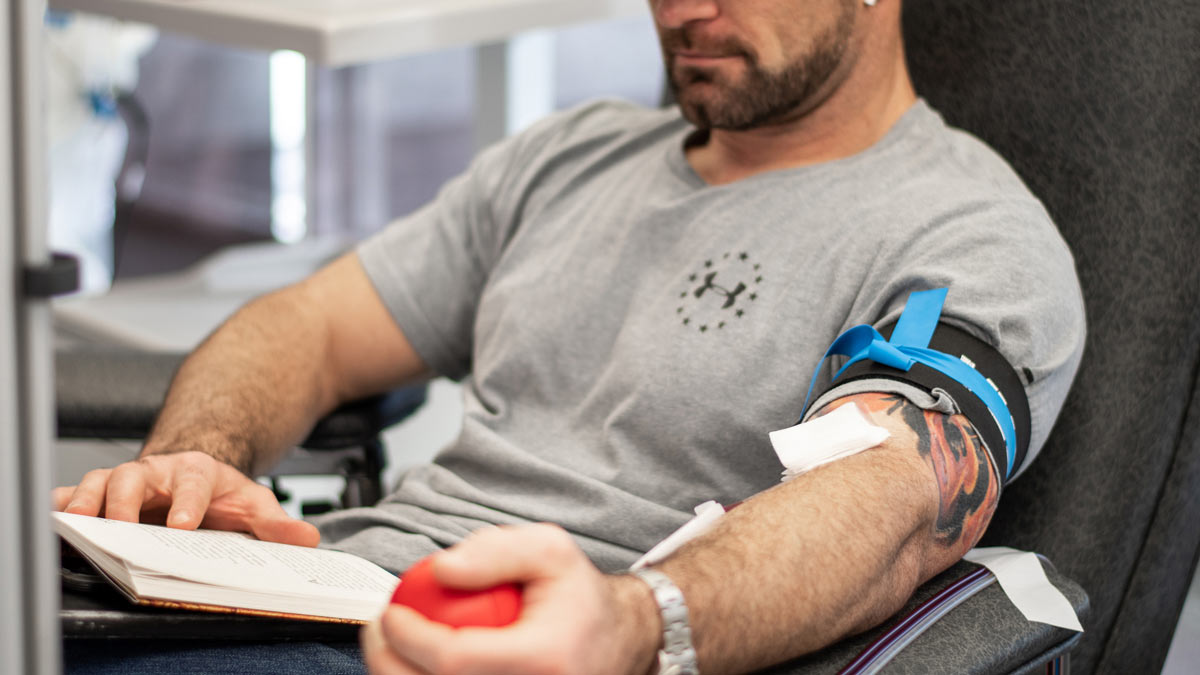If you are looking for a way to give back during the COVID-19 pandemic, consider giving blood. There is a need for blood donations during this time, and the folks at The Blood Connection want the public to know that giving blood is safe.
Not only that, but their centers make giving blood an enjoyable experience. There are six of them in the Upstate area, with locations in Greenville, Spartanburg, Easley, Greenwood, Seneca and Anderson. And we can’t leave out the neighbors in Asheville and Hendersonville, North Carolina.
Visiting a center is actually the first reason giving blood with The Blood Connection is a good idea. What is it about a center that makes the experience so great? For one, they are spacious, and the beds are bigger.
“There is plenty of room to sprawl out,” said Allie Van Dyke, The Blood Connection’s partnership and media coordinator, explaining that donors can watch TV and eat snacks.
And for those who want to see a familiar face, unlike their mobile sites, the staff at the centers does not change. Which brings us to the second reason for donating blood with The Blood Connection: convenience.
Van Dyke said, “Our centers are open seven days a week. There is only a two-hour difference on the weekends.”
Of course, if the mobile centers suit you, just check their website for dates and locations. One thing there is not a shortage of at The Blood Connection is locations for mobile blood drives.
The third reason for making the choice to give blood is really just because “it’s a great way to give back,” said Van Dyke.
“Your body produces it anyway, so there is no major work involved,” she said.
She reminded, “Just remember: What if you were the one who needed blood?”
Segueing to the fourth reason for giving blood with The Blood Connection: Blood donated through The Blood Connection is used in the local community.
“We have a partnership with every hospital in the Upstate. We are their exclusive blood providers,” Van Dyke said. “And we have been servicing this area since 1962.”
And speaking of making an impact, the fifth reason to add donating blood to your to-do list is all about variety. There are four ways to donate blood.
Whole blood is the most popular and common. A pint of blood is drawn that contains red and white cells, platelets and plasma. Its shelf life is 21 to 35 days, and a person can donate every 56 days.
Platelets can be donated every seven days, but only at the centers. Platelets, which have a shelf life of only five days, are small cell fragments that stop or prevent bleeding and are commonly used to help treat cancer patients.
Plasma is what transports water and nutrients to your body’s tissues. This type of donation can last for up to a year. You can donate plasma every 28 days – only at centers. The same is true for automated red cells, which can last 42 days and are mainly used to help those with blood disorders. They can be donated every 112 days.
Currently, there is a fifth way to donate. COVID-19 patients who have recovered can take part in an FDA-approved COVID-19 convalescent plasma collection. Although not proven in rigorous clinical trials, studies suggest that using this donated plasma has had some success in reducing symptoms and even the death rate for patients battling COVID-19. The process is the same as a regular plasma donation. It’s another way The Blood Connection is partnering with hospitals to save lives.
“There is no break for blood donation. There are people in hospital beds right now that need our blood,” Van Dyke concluded. “We have taken extra precautions to remain clean and sanitized. It is safe to give blood.”
For more information on The Blood Connection, visit www.thebloodconnection.org or call 800-392-6551.The Blood Connection is encouraging appointments at this time in order to observe social distancing.
By Theresa Stratford
